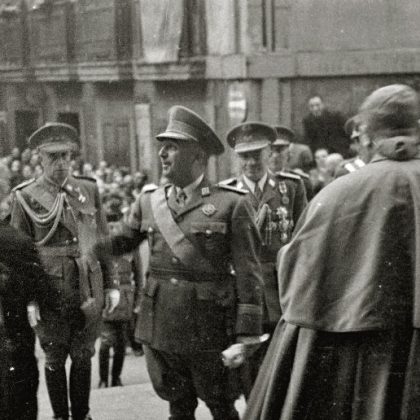The ‘ideal’ diplomat: the role of Irish women at the League of Nations and United Nations, 1923-76
This blog accompanies the Irish Historical Studies article Locating women within the Irish Department of External Affairs: a case study of Irish women at the League of Nations and United Nations, 1923–76 by Ann Marie O’Brien.
From the early years of the twentieth century Irish women demonstrated a clear desire to work in international relations. Their participation in international diplomacy was halted in 1923, concurrent with the formation of the Irish Free State. Prior to 1923, female representatives of the Irish Republic were to be found in Paris, Rome, Berlin and Madrid. Once the objective of achieving Irish independence was realised, Irish women were no longer visible on the international stage.
Joseph Walshe, secretary of the nascent Department of External Affairs, outlined his view of the ‘ideal’ diplomat in 1926: ‘In general a legal education, a good knowledge of at least one Continental language and a readiness to read at least three others’.[1] Walshe did not specify that the diplomat should be a man because he never would, or could, regard women as diplomats. The refusal to allow women into the Irish diplomatic corps limited female opportunity in the evolving multilateral sphere, created by the League of Nations in 1920. The league promoted female involvement in public life and provided women with the first opportunity to work in multilateral diplomacy. While Irish women were permitted to join the ranks of the league secretariat, the first international civil service, Walshe’s limited view of women’s capabilities resulted in an exclusively male Irish delegation from 1923.
The limitations of female opportunity in the D.E.A. were thrust sharply into focus in 1946 when Frederick Boland succeeded Walshe as secretary of the department. Almost immediately, Boland opened the diplomatic corps to women and Sheila Murphy, Walshe’s private secretary since 1926, assumed her first diplomatic role. In line with Boland’s attitudes towards women’s diplomatic ability, at least one woman was appointed to the U.N. delegation every year from Ireland’s entry in 1955. For the first time, women represented Ireland in a multilateral setting.
Many female delegates were appointed to the Third Committee managing social, cultural and humanitarian affairs and Irish women also joined this committee. The almost exclusive appointment of women to the Third Committee was undoubtedly a consequence of gendered assumptions. By being circumscribed to the Third Committee women did not reach their full potential, nor did they gain valuable experience in other diplomatic areas. In 1972, Marie Cross was appointed to the Special Political Committee. She was the first Irish woman delegate to be appointed to a U.N. committee other than the Third and this opened the possibility of women assuming different delegate roles. From 1976 the D.E.A. appointed women to the Third, Fourth and Special Political Committees at the U.N.
Using the League of Nations and United Nations as case studies, my article identifies the women involved in Irish diplomacy and the roles they undertook between 1923 and 1976. The article argues that gendered assumptions permeated the D.E.A., particularly during Walshe’s tenure as secretary. Less overt, yet equally debilitating gendered assumptions were practised after 1946, particularly in appointments at the U.N. The entire practice of diplomacy is gendered and it is important to recognise the masculine norms that have tended to underpin diplomacy since its conception. Irish women have made notable strides in Irish foreign policy, however it is important that women continue to make advances and that the Department of Foreign Affairs and Trade facilitate the development of gender equality in the practice of Irish diplomacy.
For further information see Ann Marie O’Brien, ‘Locating women within the Irish Department of External Affairs: a case study of Irish women at the League of Nations and United Nations, 1923–76’ in Irish Historical Studies, xliii, no. 163 (May 2019), pp 94-110.
[1] Joseph Walshe, department memorandum, Dec. 1926 (N.A.I., DT S5337).
Main Image: Room of the United Nations General Assembly. Taken by Jérôme BLUM on 23 November 2006. Panoramic made from 3 photos (1504×1000 pixels each). Final image: 3138×971 pixels.





